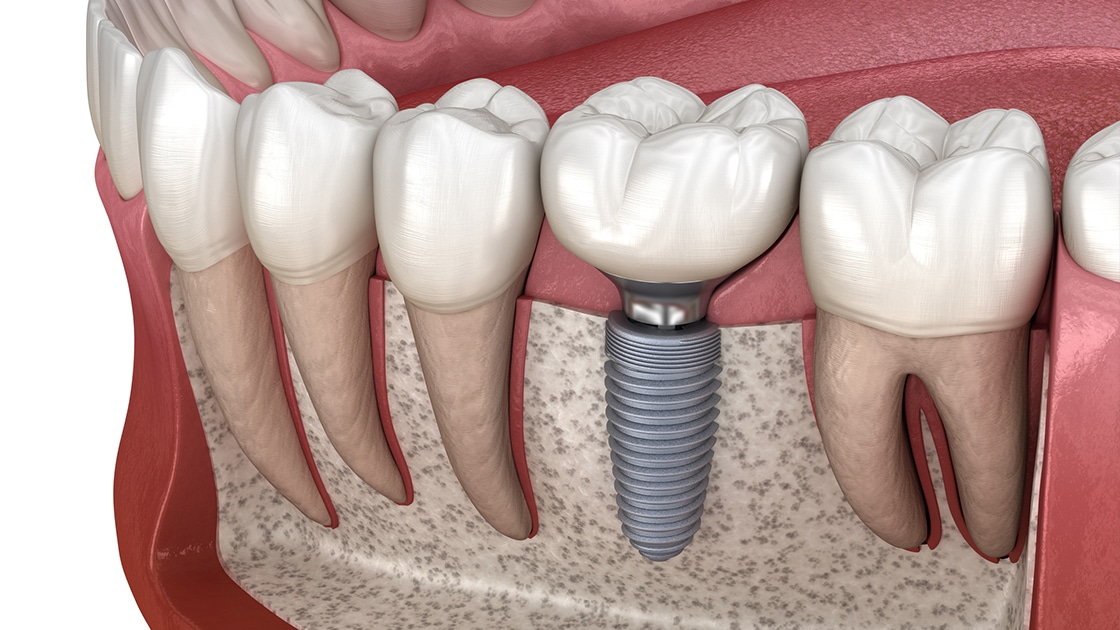Little Known Questions About Dental Sense.
Little Known Questions About Dental Sense.
Blog Article
Some Of Dental Sense
Table of ContentsThe Dental Sense PDFsNot known Factual Statements About Dental Sense The 6-Second Trick For Dental SenseThe Single Strategy To Use For Dental Sense
are clinical tools operatively dental implanted into the jaw to recover an individual's capacity to chew or their appearance. They provide assistance for man-made (phony) teeth, such as crowns, bridges, or dentures. When a tooth is lost as a result of injury or disease, an individual can experience problems such as quick bone loss, malfunctioning speech, or modifications to eating patterns that cause pain.Oral implant systems are composed of a dental implant body and dental implant abutment and may likewise consist of an abutment fixation screw. Wisdom tooth cavity. The dental implant body is surgically inserted in the jawbone in location of the tooth's root. The oral implant joint is typically connected to the dental implant body by the joint fixation screw and expands via periodontals right into the mouth to sustain the affixed man-made teeth
(https://www.twitch.tv/dentalsense1/about)Framework of The Dental Implant System choosing dental implants, talk to your dental provider about the potential benefits and threats, and whether you are a prospect for the procedure. Things to think about: Your total wellness is an important consider establishing whether you are a great candidate for dental implants, how much time it will certainly take to heal, and for how long the dental implant might remain in location.
Cigarette smoking may impact the healing process and decrease the lasting success of the implant. The recovery procedure for the dental implant body may take a number of months or longer, during which time you normally have a momentary abutment in location of the tooth. the dental implant treatment: Meticulously adhere to the dental health directions offered to you by your dental supplier.
The Buzz on Dental Sense
Implant failure can cause the requirement for an additional operation to repair or change the implant system. Restores the capacity to eat Recovers aesthetic appearance Helps maintain the jawbone from reducing as a result of bone loss Protects the wellness of the bordering bone and periodontals Helps maintain surrounding (nearby) teeth steady Improves lifestyle Damage to bordering all-natural teeth throughout dental implant placement Injury to the surrounding cells throughout surgery, such as sinus perforation Injury during surgical procedure (for instance, crack of bordering jawbone) Poor function, such as seeming like the teeth do not attack with each other usually A sensation that the tooth hangs or twisting in position resulting from a joint screw loosening Implant body failing (looseness of the dental implant body) due to systemic infection, which may be a lot more likely in people with unchecked diabetics issues due to regional infection in bone and periodontals supporting the dental implant body as a result of delayed healing, which may be more probable in individuals who smoke Difficulty cleaning the gums around the implant, causing bad oral health Untreated gum disease Post-surgical feeling numb as a result of nerve impingement or damages Always alert healthcare providers and imaging service technicians that you have oral implants prior to any type of magnetic resonance imaging (MRI) or x-ray treatments.
FDA is not familiar with any adverse events reported for MRI or x-ray procedures with dental implants. Dental implants systems are usually made from products that adhere to worldwide consensus requirements of the International Company for Standardization (ISO) or ASTM International. These criteria have details of what makes a safe material.

An oral implant is a framework that changes a missing out on tooth. With screw-like gadgets, the doctor inserts a dental implant into the jawbone, and it Source acts as a support for a man-made tooth, called a crown. A tool called an abutment connects the artificial tooth to the oral implant. The crown is customized to fit the person's mouth and match the color of their teeth.
A Biased View of Dental Sense
Some individuals are not eligible for oral implant surgery. It is for oral surgeons to operate on individuals with: intense illnessuncontrollable metabolic diseasebone or soft tissue disease or infectionIf these problems are resolved, an individual can have the surgery. In, dental cosmetic surgeons avoid operating on individuals with: If individuals with any of the above go through oral implant surgical procedure, there is a higher risk of the implant stopping working.

Oral dental implant surgical procedure is a personalized procedure. It's not the very same for everyone. Yet the adhering to gives a basic overview of what you can anticipate your dental professional, dental doctor, periodontist or prosthodontist to do: Position the implant surgically. Provide you time to heal. Affix the post and final crown, bridge or denture.
Next off, your cosmetic surgeon will thoroughly position the dental implant right into your jaw. If your dental implant is near the front of your mouth, your dental professional will certainly make a momentary tooth for you to use till you heal.
The Main Principles Of Dental Sense
Throughout the recovery stage, your jawbone must fuse to the oral implant. This procedure can take anywhere from 3 to 9 months.
Once your implant heals, your dental expert can affix the joint (little adapter blog post) and your last restoration (crown, bridge or denture). This typically takes concerning one hour to complete and may need a 2nd small surgical treatment. You should not really feel any pain throughout your dental implant treatment because your provider will certainly utilize drug to numb your periodontals.
Report this page